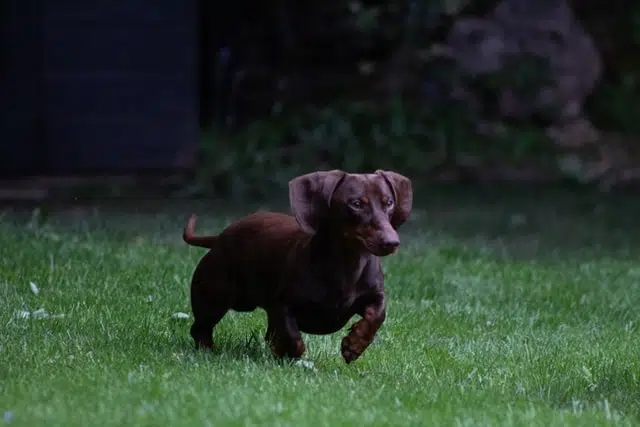Home » Blog » Pet » Pet Parenting Lifestyle » Ins and Outs of the Dashing Dachshund (aka Sausage Dog)
Categories
Tags
animal welfare
breed profile
buying a car
buying a pet
Car
car accessories
car care
car features
car insurance
Car safety
car sales
car service
cat
cat behaviour
cat body language
Cat Breeds
cat food
cat insurance
comprehensive car insurance
Dog
Dog Behaviour
dog body language
Dog Breeds
dog food
Dog Insurance
dog training
eco friendly cars
Kitten
New Car
pet accessories
pet activities
Pet Adoption
pet breeders
pet days of the year
pet fun stuff
Pet Health
pet insurance
pet parenting
Pet Safety
pet services
Puppy
rescue pets
road safety
road trip
safe driving
Recent Blog:
Facebook Posts
2 days ago
Growing old sometimes means we can’t take care of pets anymore. Find out some advice on what to do when this happens:![]()
![]() Senior Pet Parents – Contingency Plans for Your Pet – bit.ly/44bzwkS
... See MoreSee Less
Senior Pet Parents – Contingency Plans for Your Pet – bit.ly/44bzwkS
... See MoreSee Less
Senior Pet Parents' Contingency Plans for Pets
www.pd.com.au
Sometimes senior pet parents need more downtime. For older pet owners, this can be tricky to navigate if their dog or cat is full of beans and wants to4 days ago
Before you rev up the engine, let’s run through a checklist of things to do before starting your car. Not only do these steps ensure your safety (and that of others around you), but they also help in maintaining your vehicle's longevity.![]()
![]() Driving Tips: Your Checklist Before Starting Your Car -
... See MoreSee Less
Driving Tips: Your Checklist Before Starting Your Car -
... See MoreSee Less
Driving Tips: Your Checklist Before Starting Your Car
www.pd.com.au
Heading out for a drive? Hold up a second! Whether you're dashing off to work, running errands, or embarking on a road trip adventure, there are a few1 week ago
Are intestinal worms setting up camp in your dog’s gut without paying rent? Here’s how to spot the main culprits and get rid of them too:![]()
![]() Preventing, Identifying and Treating Intestinal Worms in Dogs - bit.ly/43YjCKu
... See MoreSee Less
Preventing, Identifying and Treating Intestinal Worms in Dogs - bit.ly/43YjCKu
... See MoreSee Less
Preventing, Identifying and Treating Intestinal Worms in Dogs
www.pd.com.au
Intestinal worms, such as roundworms in dogs are one of the least glamorous topics on the planet. These intestinal parasites that basically use our dogsThe Dachshund is sometimes called a sausage dog. Especially by kids who might find the breed’s real name a bit hard to pronounce. But though you might think it’s because they look a little bit like sausages with legs, it’s actually sausages which are named after the dog. Not the other way round.
What we now call hotdogs in most English speaking countries was actually first called a Dachshund sausage. But as you can see, it’s not quite as catchy as “hotdog”. So this cute little breed is actually the inspiration behind one of Australia’s favourite snack foods.
Let’s find out more about this so-called sausage dog.
Breed history
As you probably guessed, Dachshunds originated in Germany. Directly translated, Dachshund means ‘badger dog.” They’re named as such because they were bred to hunt den animals, like badgers. While they might not strike you as the ultimate hunting machine, there is some science behind this.
Their short legs were actually pretty useful as hunting dogs, because they’re kept close to ground (and thus the scent) as they tracked. Plus, the sausage dog’s small size means they were able to fit into dens made by foxes, badgers, and rabbits.
Dachshund physical appearance
The Dachshund has notably been described as “a half-a-dog high and a dog-and-a-half long“. And while that just about sums up your “regular” Daxie, they actually come in three sizes; standard, miniature, and kaninchen. The last is often referred to as rabbit (translated from German).
They also come in three coat varieties, which gets you to nine types of Daschund, all things considered.
Here are some more key characteristics of the sausage dog:
- Lifespan: 12-16
- Size: Standard 35-47cm, miniature 30-37cm, kaninchen 25-32cm.
- Breed group: Hounds
- Coat. Smooth, wirehaired, or longhaired
- Colours. Black and tan, red and tan, red, merle or brindle.
More variety than you thought, right? These little dogs pack a punch, both in terms of their endearing good looks and their larger-than-life personalities.

Dachshund personality traits
Surely a sausage dog must be harmless and adorable? While they’re super cute, intelligent, and undoubtedly loyal to their humans, Dachshunds are known to be suspicious of strangers (both humans and canine) and are sometimes even aggressive.
That said, they bond strongly with their humans and will love you for life. They require a good amount of love and attention. Without it, they can be prone to separation anxiety. But they’re not always the best choice for a family with kids. Because they’re not trusting by nature, a Dachshund might nip children they’re unfamiliar with – making school sleepovers a bit tricky.
But children growing up with pets experience lots of mental and physical benefits. So if you have kids and have your heart set on a Dachshund, it’s not to say you can’t find the right one for you. After all, each dog is an individual.
Read these articles for a better understanding of the kid-dog dynamic, and be prepared to do some puppy training and socialisation to make sure your sausage dog is dog-and-kid-friendly.
- Preventing dog aggression (for dogs who bite dogs)
- My dog bit me. Why?
- Kids and dogs: respecting boundaries
- Preventing dog attacks
Of course, good training is also key to a well-behaved dog.
Dog training and the sausage dog
Like a lot of smart and talented individuals, Dachshunds can sometimes be stubborn and hard to train. In fact, they’re quite similar to Scotties in terms of some of their personaliy traits.
But while you might not win Crufts, you can train almost any dog. You just need to commit and be consistent and patient.
Enlist the help of a professional if you’re wanting to train your Dachshund to do fun tricks or agility. Here are some training tips to help you along the way:
- Finding a great puppy training school
- Toilet training your puppy
- Positive reinforcement dog training
- Puppy training tips
And if you get frustrated or training takes longer than you think, remember that good training is invaluable. Not only does it mean you’re spending time building the bond between you and your dog, but it means they can eventually join you on more and more outings. Plus, having an obedient dog is always a pleasure.
Dachshund health
The most notable feature of a Dachshund is their long back in relation to the length of their legs and neck. Because of this, their backs are weak and they’re prone to spinal problems, especially IVDD.
As is often the case with small dogs, they’re also more prone to weight gain and obesity. Make sure to keep a close eye on your sausage dog’s diet and lifestyle to keep their weight in check. Not only does an overweight dog stand more chance of developing IVDD, but it’s also a major contributing factor to diabetes in dogs.

Dog insurance for Dachshunds and more
Pet ownership isn’t always a straightforward path, and there can be many unforeseen expenses. You never want to have to choose between your pet and your bank balance. Like all purebred dogs – or really, all dogs in general, your Dachshund could benefit from pet insurance to alleviate financial strain when it’s time to visit the vet.
Share On:




